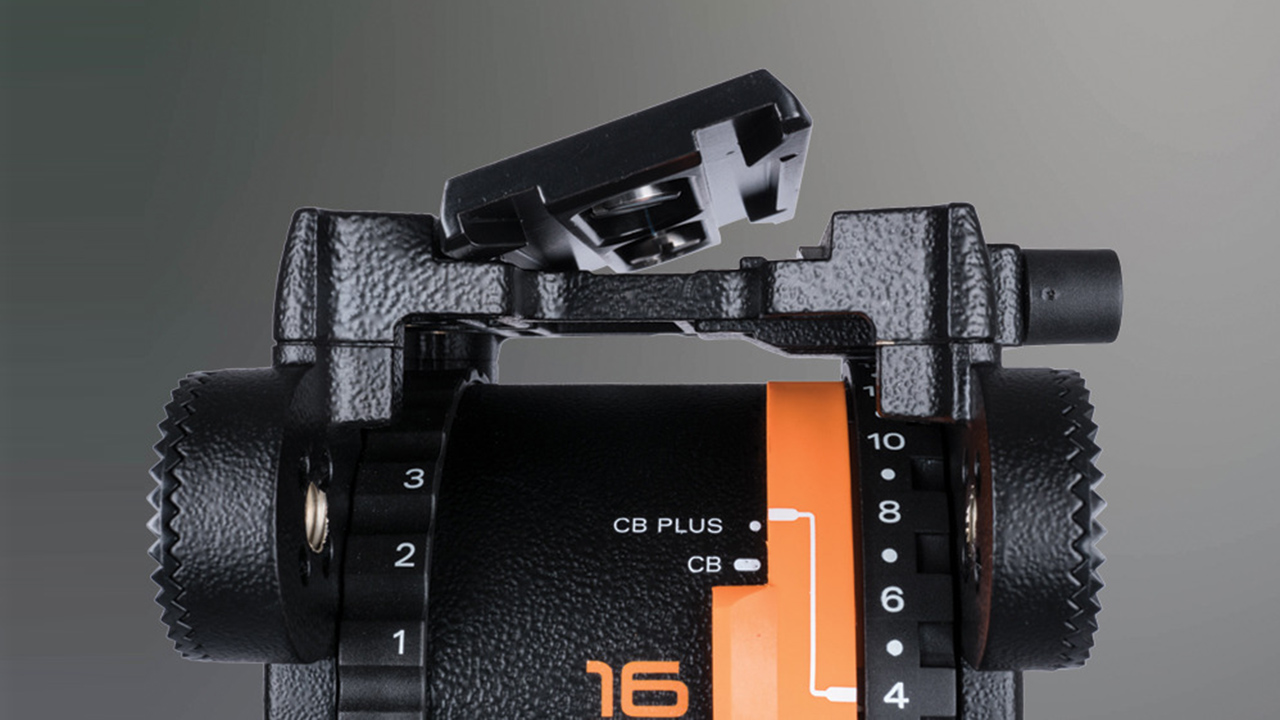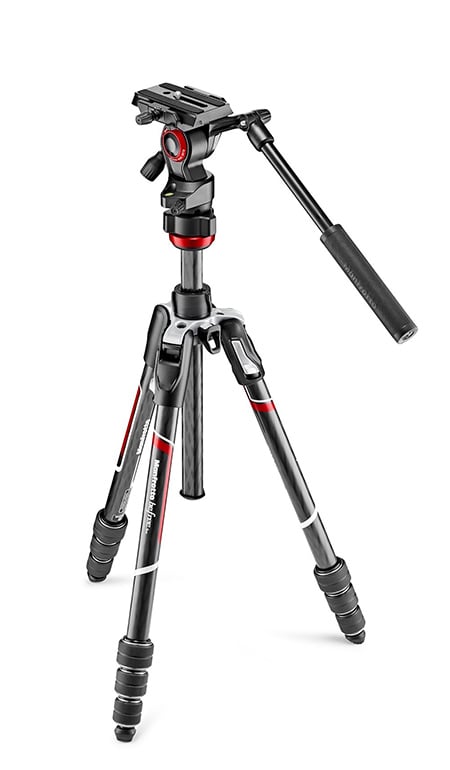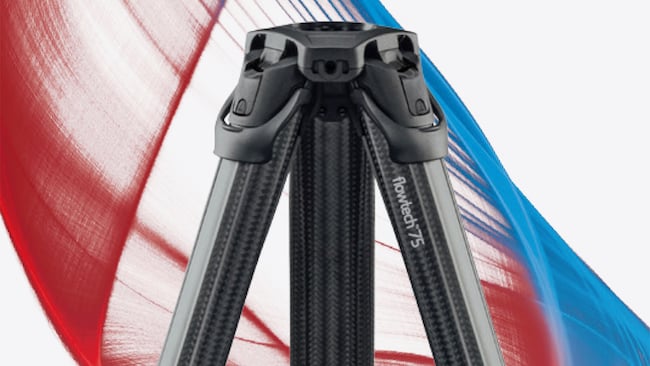
Replay: A tripod is your most important piece of gear next to your camera, so how do you choose the right one?
The tripod is one of the most used, yet least talked about bits of kit in our arsenal. When all the focus is on fancy motion control rigs and gimbals, the fact still remains that the lowly tripod is the most important pieces of gear that it is possible to have. But they are not all the same, and because the tripod is something that will, if taken care of, probably outlast your career, your choice must be something that you can live with on a day to day basis. Choose the wrong one and you’ll be cursing the day you laid down the money for it.
But what on earth do you need to be looking for? Surely it is simply just three legs and a place for mounting the camera? Not so, there’s a bit more to it than that.
Choose your purpose
The primary decision you need to make is what purpose you will be using the tripod for. Do you need it to be rock solid for time lapses, do you need it to be highly portable, or do you need something in between? Often it is good to have at least a couple of options in your equipment quiver because unfortunately it isn’t possible to have something that is really light, but also as solid as a rock. Likewise an absolutely rock solid tripod will doubtfully ever provide a high degree of mobility. On the other hand if you go for somewhere in between, it might be good for general shooting on flat ground, but you still won’t want to hike up a mountain with it. Without knowing what your main use will be it will be difficult to even begin making a purchasing decision.
Lastly, and this will also have a bearing on how heavy your tripod will be, you need to take into account what type of camera you will be mounting onto it. It’s no use having a Mitchell geared head system designed for an IMAX camera if you are only going to be putting a Sony A7III onto it! Actually, that’s something I’d like to see…

The Manfrotto Befree Live, one possible light weight travel solution, but you'll sacrifice rigidity.
The legs
Many of the components on a tripod have a knock on effect elsewhere from the bottom towards the top. Therefore the most important component of your tripod will of course be the legs. Amazingly enough, how well the legs are constructed will have a bearing on the quality of your camera movement, so they are very important. And that’s why it is also important to be able to try out the tripod in person before you lay down money for it.
One way to establish how well a tripod will behave in terms of panning movement is to place the legs at full extension, grab the base of the head mounting platform and try and torque it left and right. Any play or rotation here will impact your panning movements. On lighter tripods it may not be possible to eliminate it completely, but you want it as minimal as possible, and none existent on more sturdy products.
If you ignore this, then you can get unwanted movement in your pans, especially if you tighten up the head for a slower movement. At the beginning of a pan the camera might not start rotating at precisely the time you need it to, which is particularly important if you are using a telephoto lens to track an object. Likewise at any focal length if there is any play then as your pan motion comes to a stop you might get a ‘return’ movement as the tripod head base resets back to its natural position.
The head base is also an area to look at. Cheap tripods may have a flat base, which is all very well, but makes levelling the camera an absolute pain. For video the best thing to get is a bowl head system. 75mm is a good all round size, but there are smaller and bigger versions. The size you get will effect the choice of head you can use. But any bowl system is better than a flat fixing because it means you can get your legs stable and roughly set up, and then finalise the precise levelling of the camera using the bowl. Fast and easy.
Leg extension method
Extending the legs and retracting them is something that you will be doing time after time during the length of a shooting day. So you really do need to make sure that they extend quickly and easily with the least amount of fuss possible. Cheaper designs have a locking release at the top of each leg section, making for a lot of bending down to the floor. One of Vinten’s new designs uses a leg release on a single level so that any need to keep bending down is kept to a minimum. Miller, too, has its own designs to help make leg extension and retraction as fuss free as possible, without the need to keep going to floor level. It’s worth spending a bit extra to get a system you are happy with, and to actually try it in person because you’ll be living with it for a long time!
If you are going to be using the tripod in extreme conditions, make sure that the mechanisms are designed such that dust and water ingress, particularly salt water, won’t have an adverse effect. Some tripods such as those from Gitso have been designed with salt water use in mind, and so if this is the sort of environment you will find yourself in a lot, it makes sense to get a tripod that can withstand it.
Lastly, tripod legs are uasually either made from aluminium or from carbon fibre. Carbon sticks are more expensive, but often lighter. Metal legs are cheaper and perhaps slightly heavier. If you dropped the tripod from a heavy height for whatever reason, aluminium is more likely to survive. That said, personally I prefer carbon and haven’t yet dropped my sticks from any degree of height, touch wood.

Vinten's innovative Flowtech system is a big step up for convenience
Spreaders
Most professional tripods come with a form of spreader. This can take the form of a mid-level one, or one that is at floor level. Some models even have a ‘floor’ spreader that is slightly elevated from the ground.
A spreader will keep your legs from spreading out too far and will make the whole rig much easier to adjust (hence the name). A floor level spreader is best used on flat floors, such as in building interiors. The plastic construction means that you won’t need to add any protection against damaging the floor surface with the leg spikes.
The drawback with floor level spreaders is that they aren’t as good on uneven ground, and can even be detrimental to stability. If you will be shooting outside a lot then a mid level spreader will be your best bet, along with some rubber caps for the leg spikes for those occasions when you are working indoors.
The tripod head
This is, for want of a better word, the brains of the system. It’s what your camera will be fixed to, and again the wrong choice here could be very frustrating in the long term.
Things have come on a long way since the bad old days of having to have a plastic friction head if you wanted something light and inexpensive. These days companies like Manfrotto make a fluid head tripod system such as the Befree Live, which in its aluminium variation only costs around £135. For carbon that price jumps to £350, but at only 1.3kg it is very light indeed.
Of course for that price you won’t get all the bells and whistles, but if your budget is stretched and you need to travel a lot it might be what you need.
If you need something for quality day-to-day work however, you need a robust head that has good movement as well as good counter balancing. Any decent modern fluid head will allow you to fine tune the balance when the camera is mounted onto it such a that you can leave the camera at any tilt angle and it will remain there for as long as you leave it alone. This is essential for truly smooth, unhindered movement, particularly when it comes to the the beginning and end of movements. Not all tripod heads, even rather pricey ones, have as much control as you might like in this regard. Some of the older Miller heads for example only allowed two ‘weight’ selections and fore and aft balance. With the right ENG camera this was okay. But with the best heads now offering very fine tuning indeed it is as well to go for the best one you can afford for the type of use you will be employing it.
Something to look for is how well the head can perform diagonal movements. Some heads will produce a ‘stepping’ effect, which clearly isn’t a good thing, while the best heads will be completely smooth.
Final thoughts
A tripod is for life, not just for the short term. Buy the right one and it will outlast all your other gear, and you will enjoy using it, so it as well to buy the best one your budget can afford. Other things to look for are convenience features such as carry handles, as well as how easy it is to move around. How fast can you collapse it and re-erect it to quickly move on to a new position or location?
There you have it, the lowly tripod. There's a bit more to think about when buying one than you might think.
Tags: Production


Comments